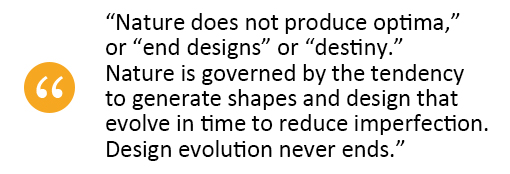Oftentimes organizations are viewed as a type of linear, production line arrangement, composed of individuals set upon a task toward a singular, overarching objective. We carry a notion of a sort of “mechanized stream,” wherein leaders assign tasks and workers push hard to complete the tasks required of them.
However, this linear concept is incomplete. Instead of looking at organizations as machines, we should look at them as an ecosystem. The people involved in the process are living beings, not machines who merely follow orders. There is an organic flow of things and people fall into that flow.
Mapping the Flow
In the article, “Reconceptualizing organizations from complicated machines to flow streams,” author Sonja Blignaut shares a timely and timeless tip to shift our concept of organizations from machines to one of “flux and nature” as flowing streams.
Blignaut draws upon the metaphor of weather systems as flow systems, studying the dynamics of weather and other naturally occurring systems. She realized that this metaphor of natural systems is the perfect preparation for the emerging trajectory of her work.

She further realized that the “interplay between flow constraints and options is key to understanding how to navigate and thrive in complexity.” This flow presents itself in areas such as workflow, process flow, cash flow, data flow, information flow, and even thinks more broadly to include every flow within organizations (Nicolson, 2018).
Forming the Workflow
Similarly, in the Workflow Learning environment, there is a state to be achieved in order for an organization to enter a “flowing stream.”
Consider the considerable energies each worker in the organization displays:
| |
The iterative flow of “thinking through” of information, tapping into the logical and intuitive | ||
| |
Reflecting on past information and experiences | ||
| |
The future-forward flow of possibilities integrated and interconnected with the core purpose of the overarching organizational system |
This thinking flow “in and through the four quadrants of the brain (Lynch Four Brain Model, 1988, 1993, 2003), and around core purpose, extrapolated by Tayko (2010, 2012, 2017) in whole brain literacy, somehow relates well to the notion of “think/workflow in flowing streams.”
Sonja Blignaut further elaborates that in nature, form follows flow. However, the antithesis is true in organizations. There is a tendency to design structures or instructions first and then try to force flow through them. This is inherently backwards.
Organizations are living organisms are themselves processes. (Nicolson, 2018).

In the workplace, there needs to be flowing streams for workflow learning to occur. Anything that is a process is a flow. So, if we consider how things flow through time, then learning and change are also forms of flow.
In Summary
In organizations, as with natural systems, when flow stops, nothing else follows. This is why we should always ensure that we optimize the flow to keep the organization going.
The real challenge, however, for all those promoting and engaging the workers/learners in Workflow Learning is how to create and sustain the organizations as “flowing streams” in sync with the “flow” state of Workflow Learning.
References:
Sonja Blignaut (2019) Reconceptualising organisations: from complicated machines to flowing streams
Tip #56 – Is Your Organization Losing Its Brain?
Tip #213: Enhancing Observational Skills Is Crucial in Workflow Learning
Tip #222 – How to Shift the Learning Culture From Dependency to Workflow Learning
Ray Jimenez, PhD
Vignettes Learning
“Helping Learners Learn Their Way”

